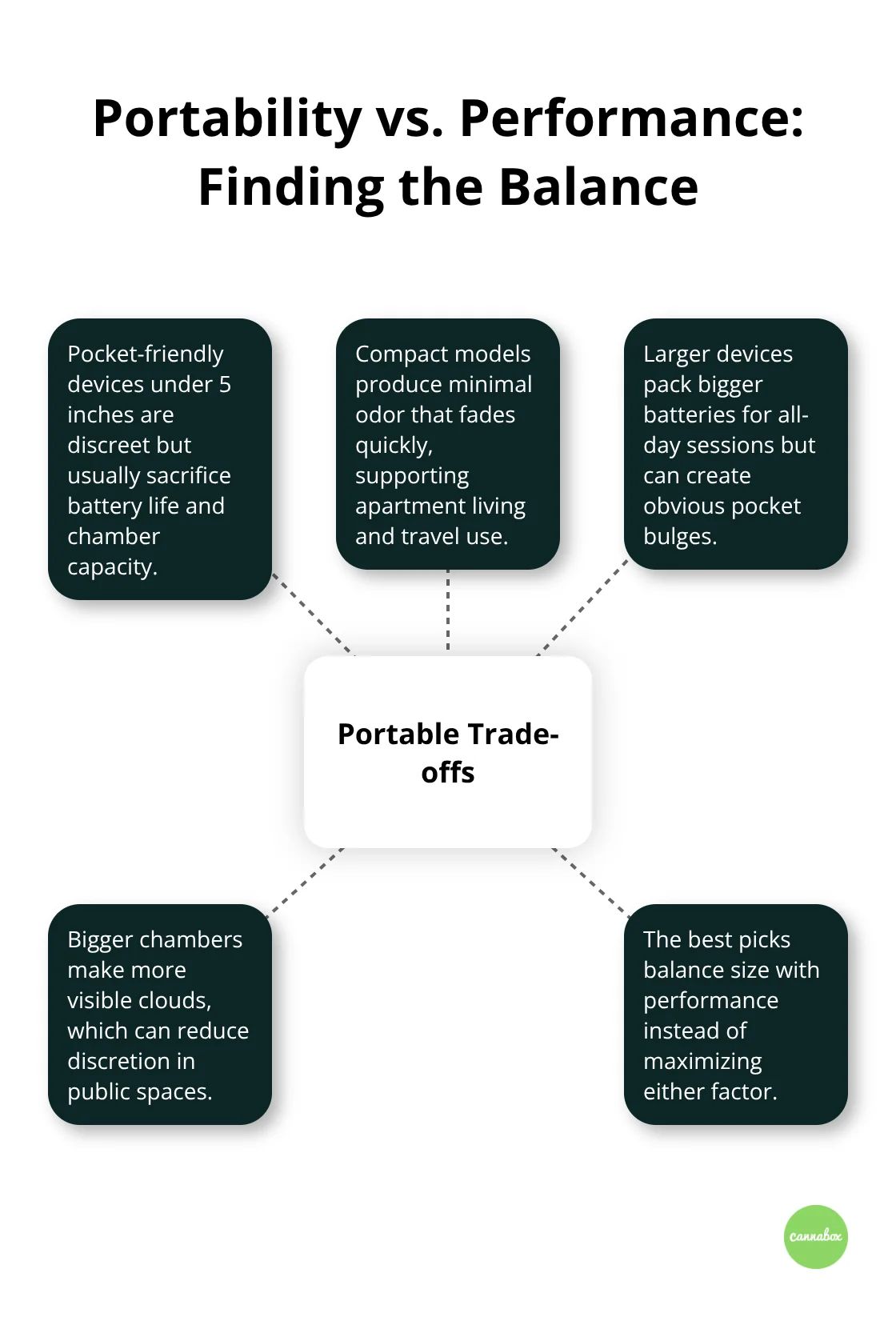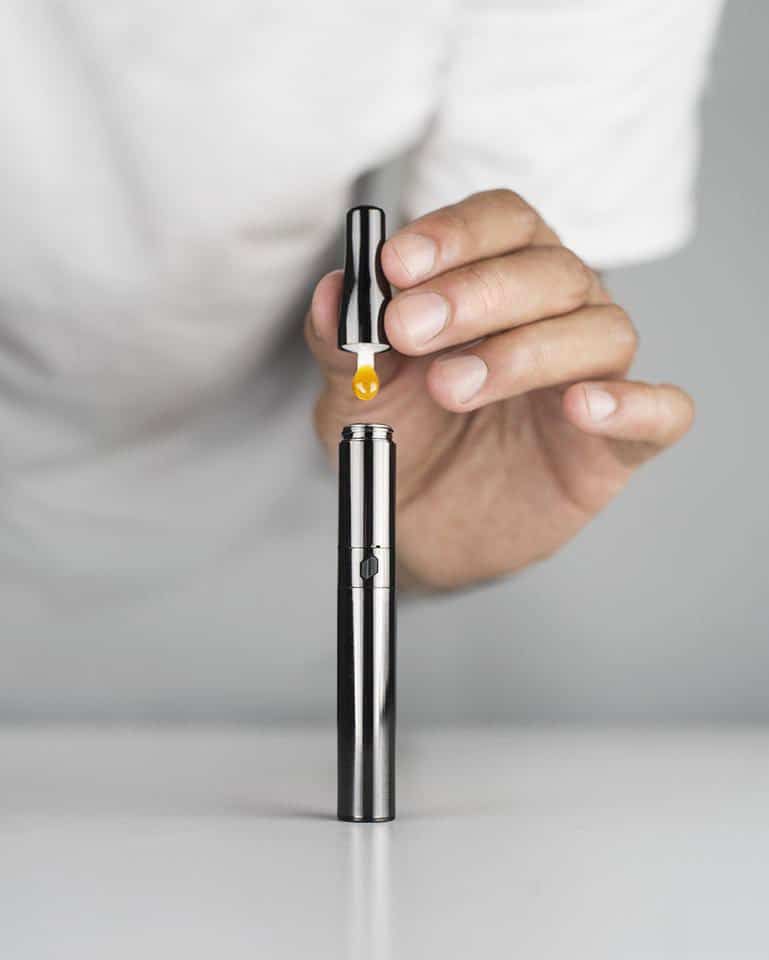Dab pens have transformed concentrate consumption with their portability and ease of use. The market offers several distinct types of dab pens, each designed with different heating technologies and features.
We at Cannabox understand that choosing the right device depends on your specific needs and preferences. This guide breaks down the main categories to help you make an informed decision.
Which Dab Pen Heating System Works Best
Coil Systems Dominate Entry-Level Markets
Coil heating elements control the entry-level market because they heat up in 10-15 seconds and are affordable to manufacture. The Utillian 2 uses dual quartz coils that reach 400°F within seconds, which makes it perfect for quick sessions. However, coils burn out after 200-300 uses and can produce harsh vapor at temperatures above 450°F.
The Kanthal coils in devices like the Tronian Gammatron deliver robust clouds but sacrifice flavor quality. Most coil-based pens operate between 350-500°F, with lower settings that preserve terpenes while higher temperatures maximize vapor density.
Ceramic Chambers Deliver Superior Flavor
Ceramic heating systems cost 40% more to manufacture but preserve concentrate flavors significantly better than metal coils. The Dr. Dabber Ghost 2 features 360° ceramic heating that maintains consistent temperatures within 5°F of your target setting (a precision level that protects expensive concentrates).

Ceramic chambers heat more slowly, they take 30-45 seconds to reach optimal temperature, but they distribute heat evenly across your concentrate. This technology prevents hot spots that can burn expensive live resin that costs $80+ per gram. Devices with ceramic chambers typically last 2-3 times longer than coil systems because ceramic doesn’t degrade from repeated heating cycles.
Quartz Crystal Technology Maximizes Potency
Quartz heating elements represent the premium tier, found in devices like the Focus V Aeris and higher-end Puffco models. Quartz reaches temperatures up to 600°F while it maintains exceptional flavor clarity because it’s chemically inert. These systems cost 60% more than ceramic alternatives but deliver the purest vapor experience possible.
The material heats rapidly like coils but maintains temperature stability like ceramic. Professional concentrate users prefer quartz because it doesn’t absorb flavors between sessions (ideal for sampling different strains). Battery consumption runs 20% higher with quartz systems due to their power requirements, but the vapor quality justifies the trade-off for serious enthusiasts.
Understanding these heating technologies helps you narrow down your options, but other factors like battery life and temperature control also play major roles in your overall experience.
What Technical Specs Actually Matter
Battery Life Controls Your Daily Sessions
Battery capacity determines your daily usage patterns more than any other feature. The Utillian 6 packs a 1500mAh battery that handles 100+ sessions before it requires a recharge, while budget models with 350mAh batteries die after 15-20 uses.

USB-C ports have become standard in 2025 devices because they charge 3x faster than micro-USB connections. The Puffco Pivot charges from dead to full in 45 minutes with USB-C, compared to 2.5 hours for older micro-USB models.
Temperature Precision Protects Your Investment
Precise temperature control separates premium devices from basic models. The Dr. Dabber Switch 2 maintains temperatures within 2°F of your target, while cheaper pens fluctuate by 30-50°F. This precision matters because terpenes have unique boiling points typically ranging from 248°F to 356°F. Devices with voltage-only control waste expensive concentrates because 3.8V can reach 480°F and burn your $80 live resin. Real-time temperature displays prevent guesswork and protect your concentrate investment.
Chamber Size Impacts Session Frequency
Chamber size directly impacts your session frequency and maintenance schedule. Large chambers in devices like the XMAX Qomo hold 0.3 grams of concentrate for extended sessions, while micro chambers require reloads every 3-4 hits. However, bigger chambers collect more residue and need cleanup every 5-7 uses compared to smaller chambers that stay cleaner for 10+ sessions. Rice grain-sized loads prevent clogs regardless of chamber size (but larger chambers give you flexibility for group sessions without constant reload interruptions).
These technical specifications work together with design factors that affect your daily experience, from how discreetly you can use your device to how much maintenance it requires.
How Real-World Performance Factors Stack Up
Vapor Production Shows Clear Winners
The vapor quality gap between heating systems becomes obvious during daily use. Ceramic chambers produce denser vapor than coil systems while they preserve terpene profiles that coils destroy at high temperatures. Quartz systems deliver the cleanest taste but require more battery power per session. Temperature stability matters more than peak temperature because fluctuations burn expensive concentrates and create harsh throat hits that ruin the experience.
Maintenance Schedules Determine Long-Term Costs
Weekly cleaning prevents performance degradation but most users wait until airflow blocks completely. Coil systems need replacement every few hundred uses, with replacement coils typically costing $15-25 depending on the device. Ceramic chambers last longer but require isopropyl alcohol cleaning after every few sessions to prevent residue buildup. Some devices take just minutes to disassemble and clean while complex portable e-rigs need much longer per cleaning session. Smaller concentrate loads reduce cleaning frequency compared to overloaded chambers. Devices with removable parts cost less to maintain long-term because you replace components instead of entire units.
Size and Stealth Features Impact Daily Use
Pocket-friendly devices under 5 inches long work best for discrete sessions but sacrifice battery life and chamber capacity. Compact models produce minimal odor that dissipates quickly, making them perfect for apartment living or travel. Larger devices offer bigger batteries for all-day use but create obvious bulges in standard pockets. Vapor dissipates faster than smoke, but devices with larger chambers produce more visible clouds that compromise discretion, especially in public spaces.

The best portable options balance size with performance rather than maximize either feature alone.
Final Thoughts
The best types of dab pen depend entirely on your usage patterns and priorities. New users should start with ceramic chamber devices like the Dr. Dabber Ghost 2 because they preserve flavor while they remain forgiving during the learning process. Heavy users benefit from quartz systems that deliver maximum potency and don’t absorb flavors between sessions, despite higher battery consumption.
Budget-conscious consumers find excellent value in coil-based pens like the Utillian 2, which heat quickly and cost less upfront. However, replacement coils add long-term expenses that ceramic systems avoid. Frequent travelers need compact devices under 5 inches with strong batteries, while home users can prioritize larger chambers and premium heating elements (temperature control matters more than heating type for expensive concentrates).
We at Cannabox help enthusiasts discover quality accessories through our monthly subscription service that features curated products. Your perfect dab pen balances heating technology, battery life, and maintenance requirements with your specific consumption habits. Devices with real-time displays prevent waste and protect your investment in premium concentrates.



